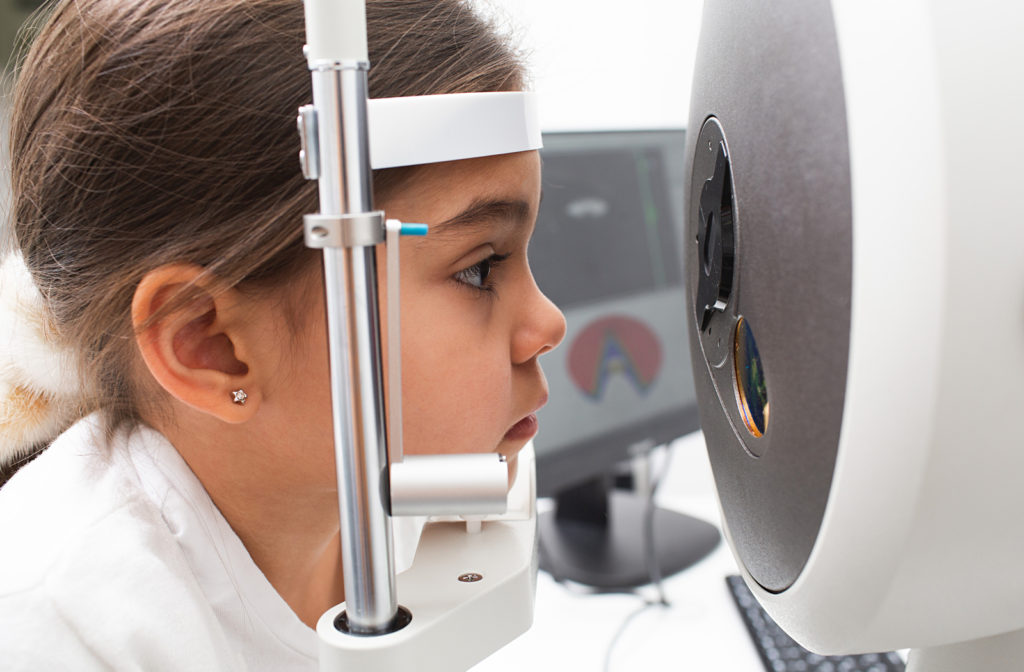No one knows who really invented eye glasses. Most likely, the lens discovered in the ancient ruins of Nineveh is the earliest known vision aid. Recent technology successfully advanced eye care and vision aids far more than our ancestors likely imagined.
What will our eyes be like 100 years from now? Will further advances in technology lead to even more-advanced vision aids? Will technology allow people to see in ways only imagined right now? Will a person’s eyes function differently than the way they do now? Will the eyes give people real super powers?
Recent Advances in Eye Care

Eye care actually dates back several centuries. It just took the right individuals to invent and market products in such a way that people were able to take advantage on a large scale basis. For example, the first contacts are not the creation of the 1960s that many people likely believe. Several sources credit Leonardo Da Vinci with creating the concept of the contact lens.
Since that time, eye care advances mean that optometrists help people see better than ever, ophthalmologists and other specialists help prevent, treat and cure eye diseases. One of the best inventions in recent eye care is the artificial lens used in cataract surgery.
Although cataract surgery involves removing only the lens, just a few decades ago, the idea of any portion of the natural eye being replaced with a working artificial substitute was reserved for Saturday morning cartoons.
The Human Eye, Super Heroes and Future Technology
If you grew up watching super heroes, you know that Superman has X-ray vision and that Dazzler sees into the “Ultra violet range.” Not only that, but as her powers grew, she discovered new aspects of her mutations.
A secret government agency that studied the full realm of Dazzler’s powers discovered “There was an unlimited amount of sound that she could transduce into light,” according to Comic Vine. She had the ability to absorb and store the sound until she needed to use it as any number of light source needs, including everything from a laser beam to an ultraviolet blast. Will humans one day have the ability to alter sound so that it becomes a light source? That would most likely put an end to power outages, not to mention having the ability to temporarily blind anyone posing a threat to enable a quick escape.
While other television shows and movies featured characters with a wide array of futuristic capabilities related to “eye power,” those abilities may not be science fiction after all.
Our Eyes in the Future
Imagining the ability to see much better than people do now is no longer reserved for cartoons and super heroes. In fact, The UK’s Express reveals that Dr. Josef Bille, creator of laser eye surgery, claims that there should not be any blind person within just 10 years. Bille explained that new laser therapy exists that removes cataracts without the need for incisions. This reduces complications and decreases healing time.
Why replace only a portion of the eye when technology likely exists to change the function of or replace the entire eye? Why should patients spend millions of dollars on medical appointments to monitor their healthcare issues when technology allows the eye to play a significant role in overall healthcare?
Colored contact lenses have been around for awhile now, but in the near future we may have contact lenses of an altogether different variety. Google, working with pharmaceutical company Novartis, recently obtained a patent for its “Smart Lens.” Initially, the Smart Lens will work to help people manage their diabetes. However, with futuristic advances, the teams working on the Smart Lens envision it managing to help other diseases as well.
Perhaps, with future technology, the human eye will actually have the super powers that once only existed in comic books and sci-fi movies. Perhaps in a laboratory somewhere, the futuristic eye of 100 years from now already exists – behind locked doors with access granted to only a limited few researchers and eye care specialists.


